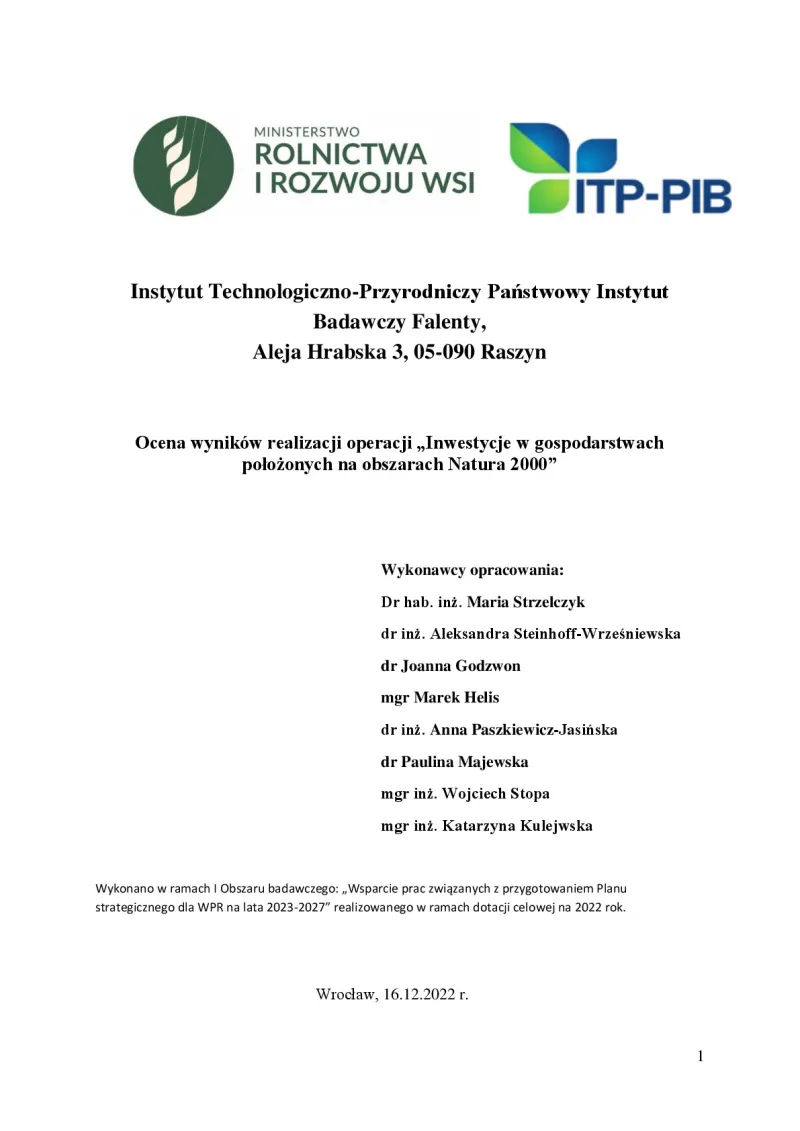Evaluation of investment results of farms located in Natura 2000 areas
The evaluation focuses on the results of the implementation of the operation 'Investments in farms located in Natura 2000 areas', covered by the Rural Development Program for 2014-2020.
- Poland
- 2014-2022
- Environmental impacts

The main objective of this evaluation report, commissioned by the ministry of agriculture and rural development, is to assess the results of the implementation of the operation 'Investments in farms located in Natura 2000 areas', implemented under the sub-measure "Support for investments in agricultural holdings" covered by the Rural Development Program for 2014-2020 by the Agency for Restructuring and Modernization of Agriculture (ARMA (paying agency)).
The methodology includes qualitative and quantitative methods. Qualitative methods included a literature review and content analysis of the results from individual in-depth interviews.
Quantitative methods were the analysis of descriptive statistics (percentages) of monitoring data and survey results.
The main data sources are monitoring data from ARMR and interviews with beneficiaries and advisors.
The analysis of the relationship between the number of applications submitted in individual voivodeships (NUTS2) and the size of Natura 2000 areas is moderate.
The need for support during the preparation of applications and throughout the application process is also evident in the high percentage of rejected applications (36.3% on average nationwide). The vast majority of negative decisions concerned the failure of applicants to obtain the required number of points despite the clearly defined evaluation criteria. Respondents stressed that applicants are sometimes called several times to the ARMA premises, which is a significant inconvenience and may act as a deterrent, resulting in farmers discontinuing the application process. Additionally, applicants have to request additional documents from other authorities, which takes time, involves additional steps, travel, costs and acts as a disincentive.
There is a relatively high number of applications rejected due to poor classification into the 'young farmer' group. Hence, there is a need for assistance to farmers, at the application preparation stage.
The analysis of the types of investments for which applications were submitted showed, that the greatest interest was in investments related to the purchase of machines and devices intended for servicing green areas on the farm. Modernisation and construction of new buildings or premises are not very popular due to the high administrative burden for beneficiaries related to the preparation of the application. If possible, the requirements for such investments could be revised (simplified) so that more applicants decide to do so.
To a large extent, the beneficiaries of the measure were holdings with a significant share of permanent grassland located in Natura 2000 areas in relation to the total area of agricultural land in the holding. However, the beneficiaries do not indicate how the aid received will contribute to the protection of habitat areas in Natura 2000 areas.
Respondents reported a lack of sufficient knowledge about the financial resources available to farmers in the area of innovation, as seen in other aid programs. Hence, it is necessary to constantly and broadly inform farmers about available opportunities to apply for funds from other sources.
Analysis of the data provided by ARMA indicates that the investments assisted under the operation in question have been implemented well. The implementation of the operation 'Investments in holdings situated in Natura 2000 areas' will undoubtedly contribute to the improvement of habitats in Natura 2000 areas.
Author(s)
Technology and Natural Science Institute (Instytut Technologiczno-Przyrodniczy – PIB)